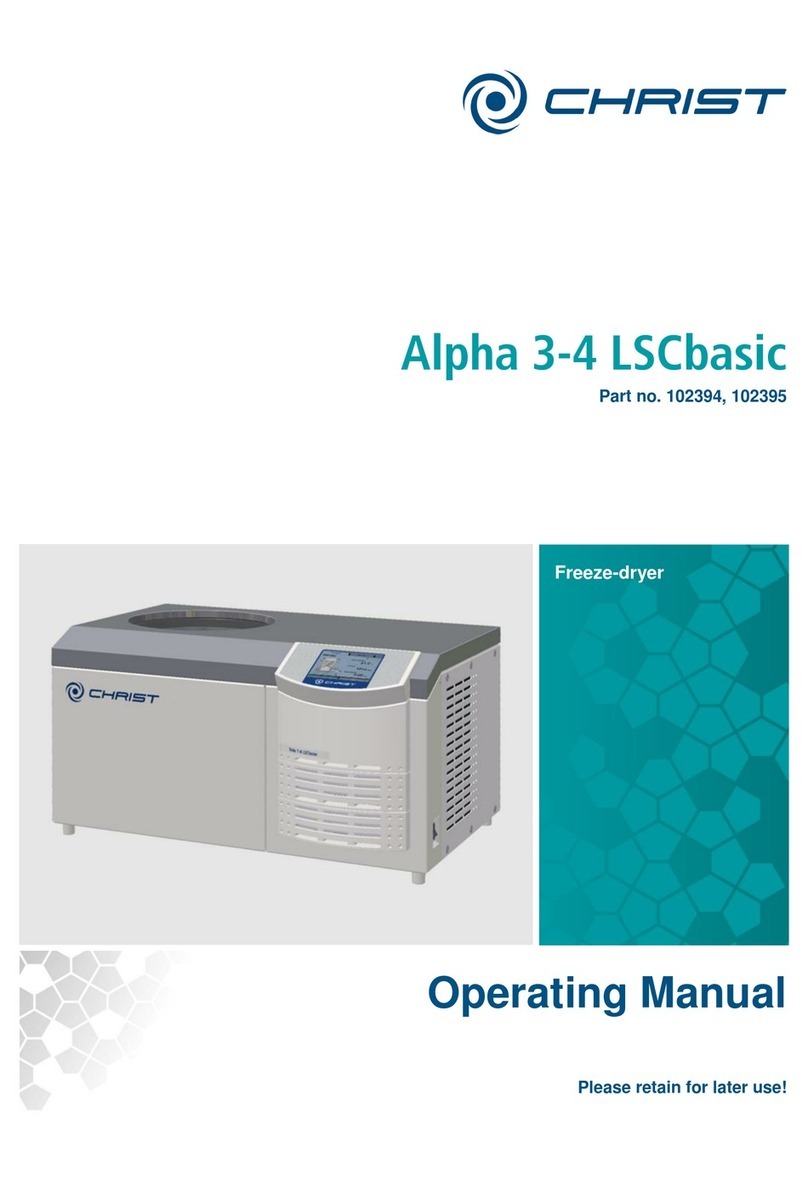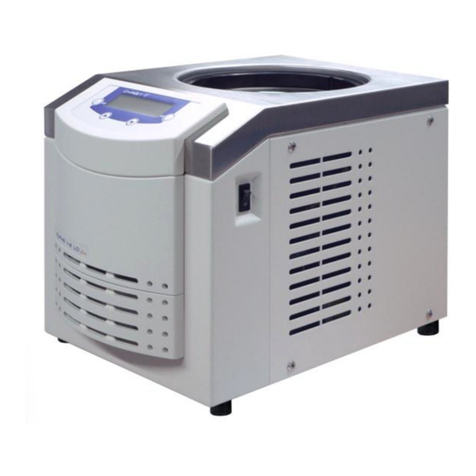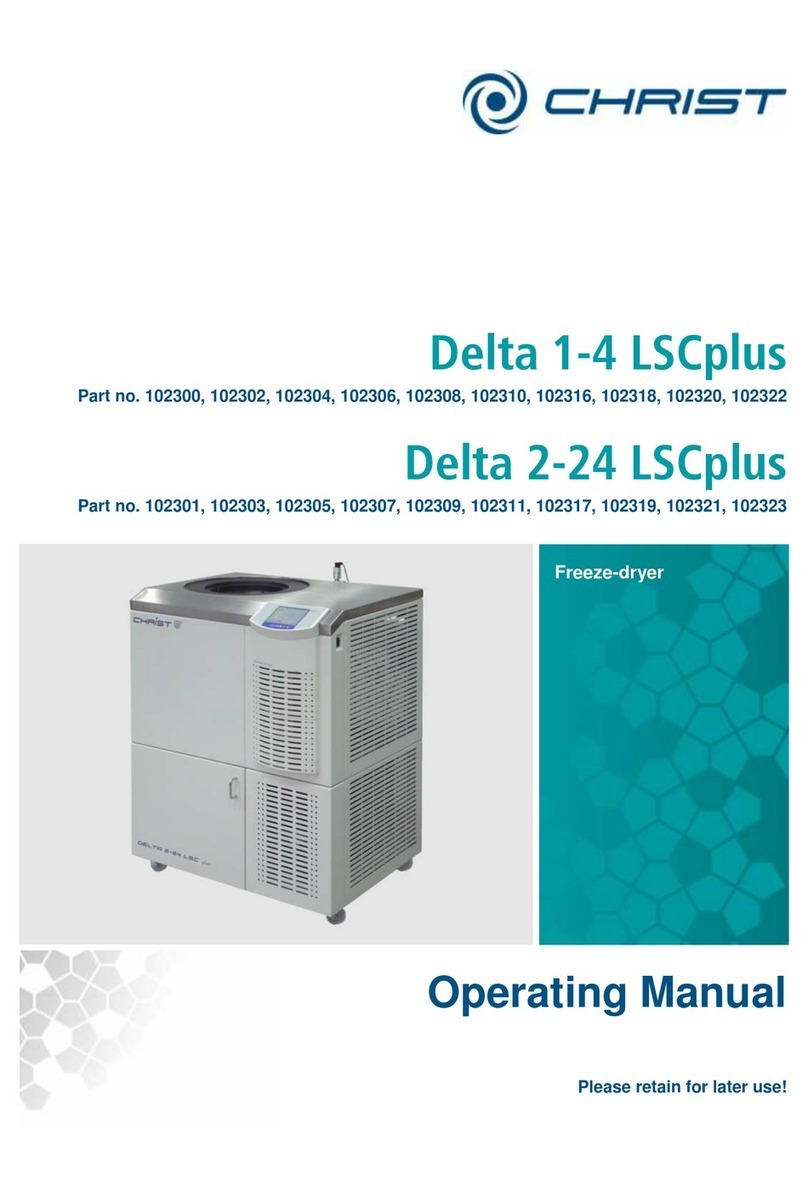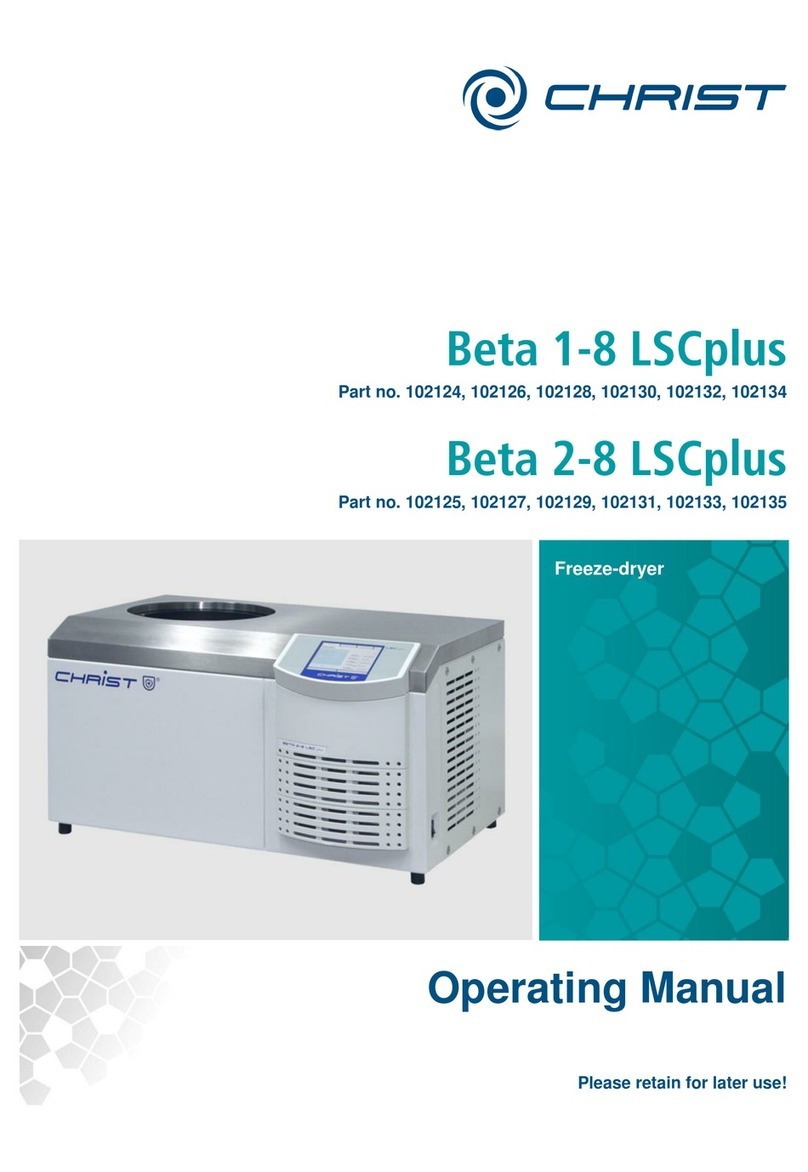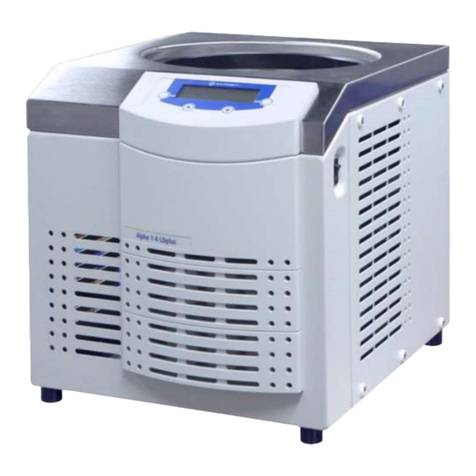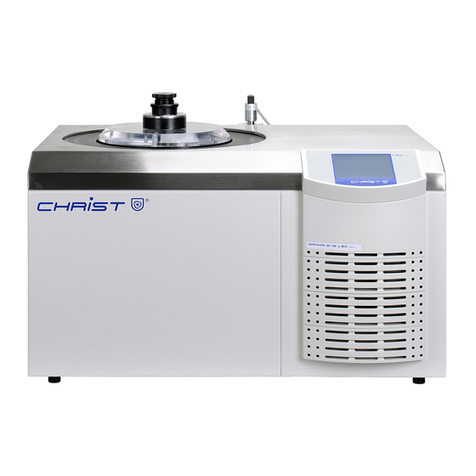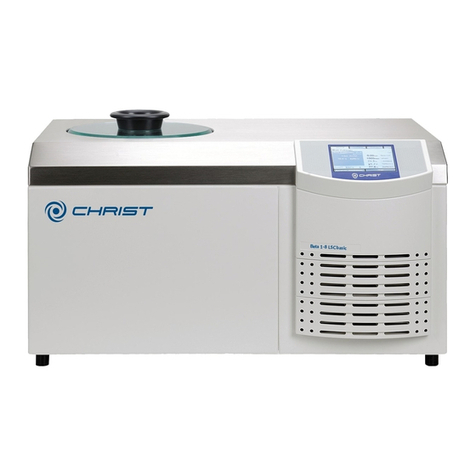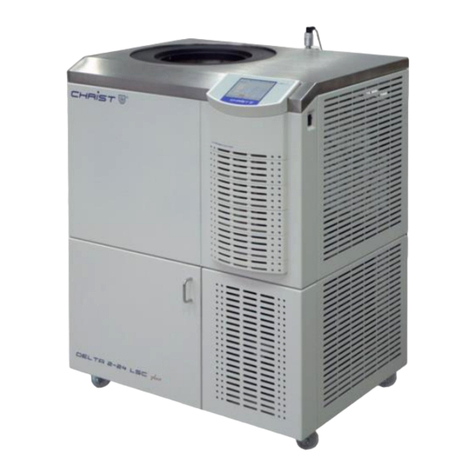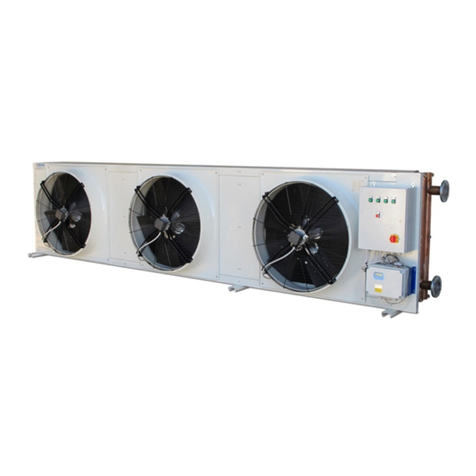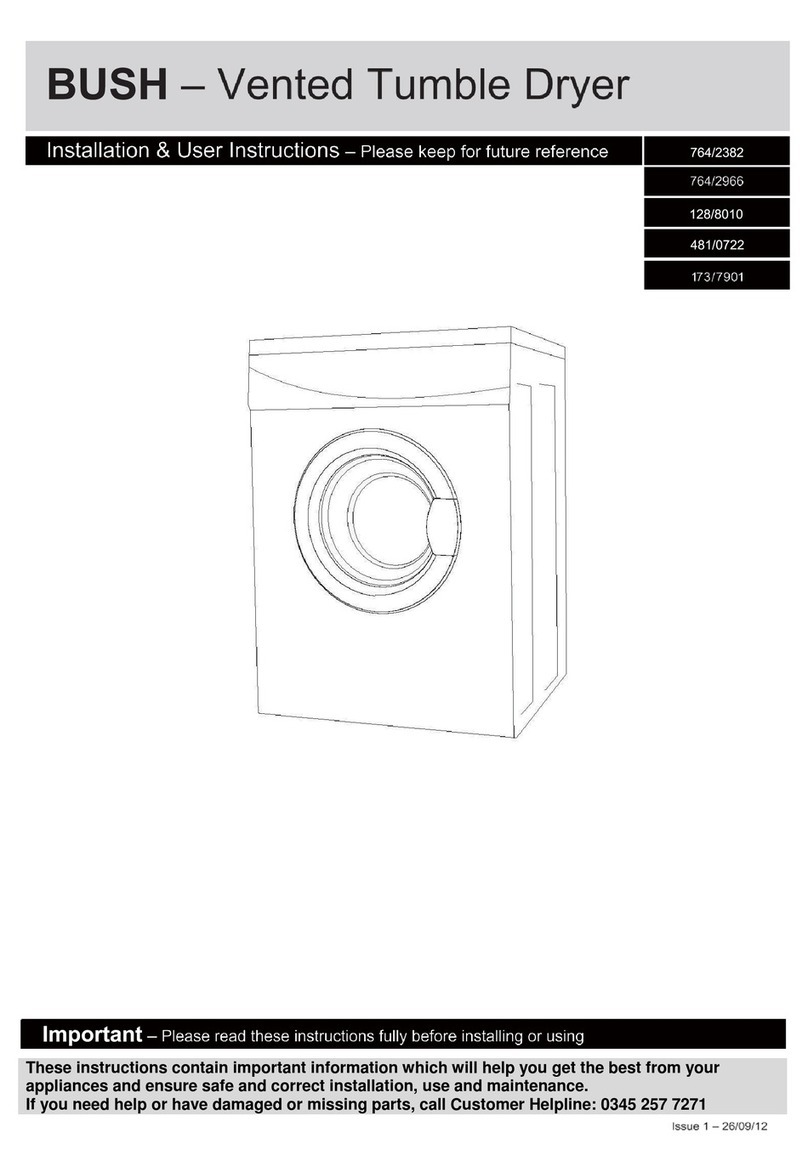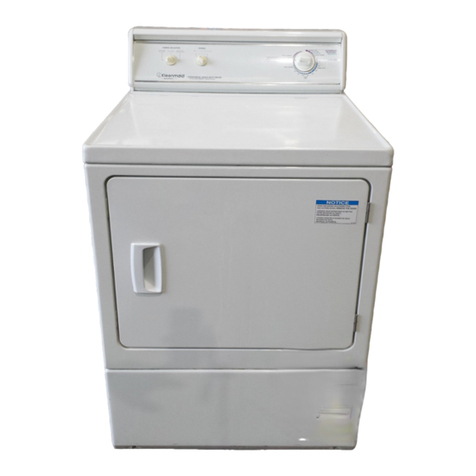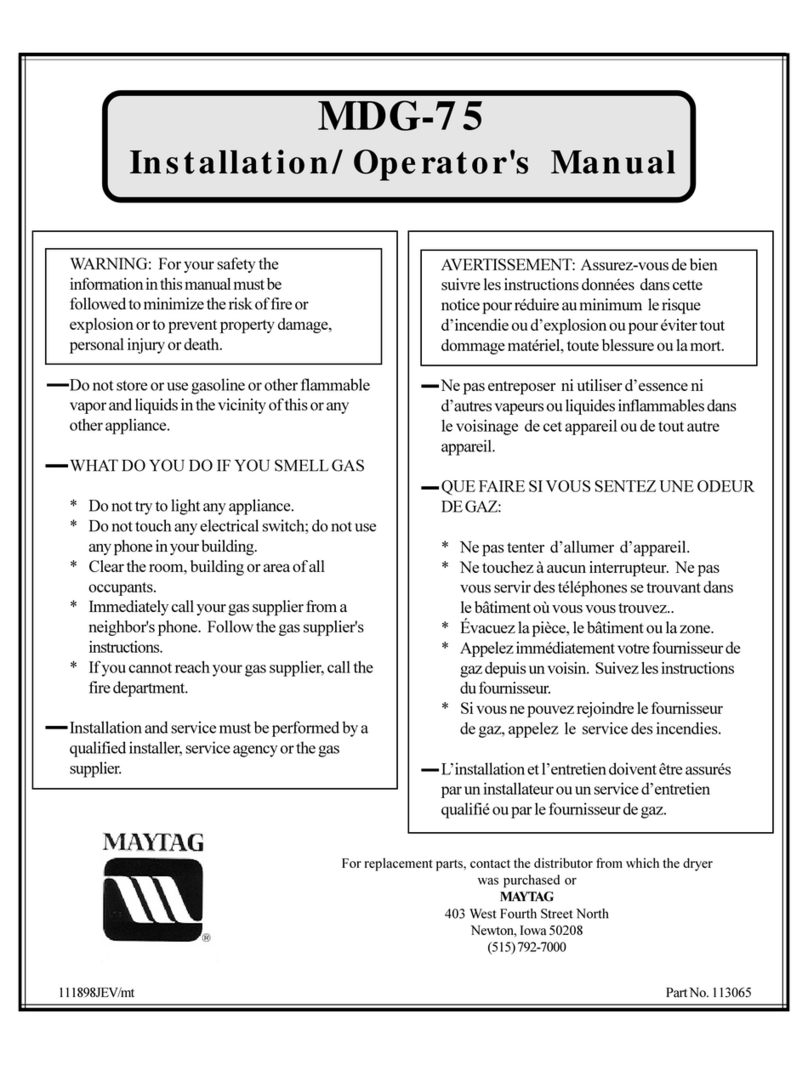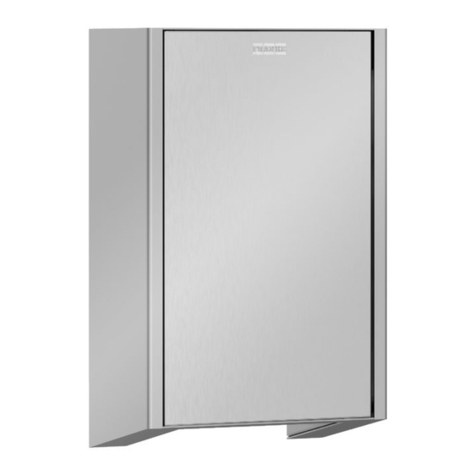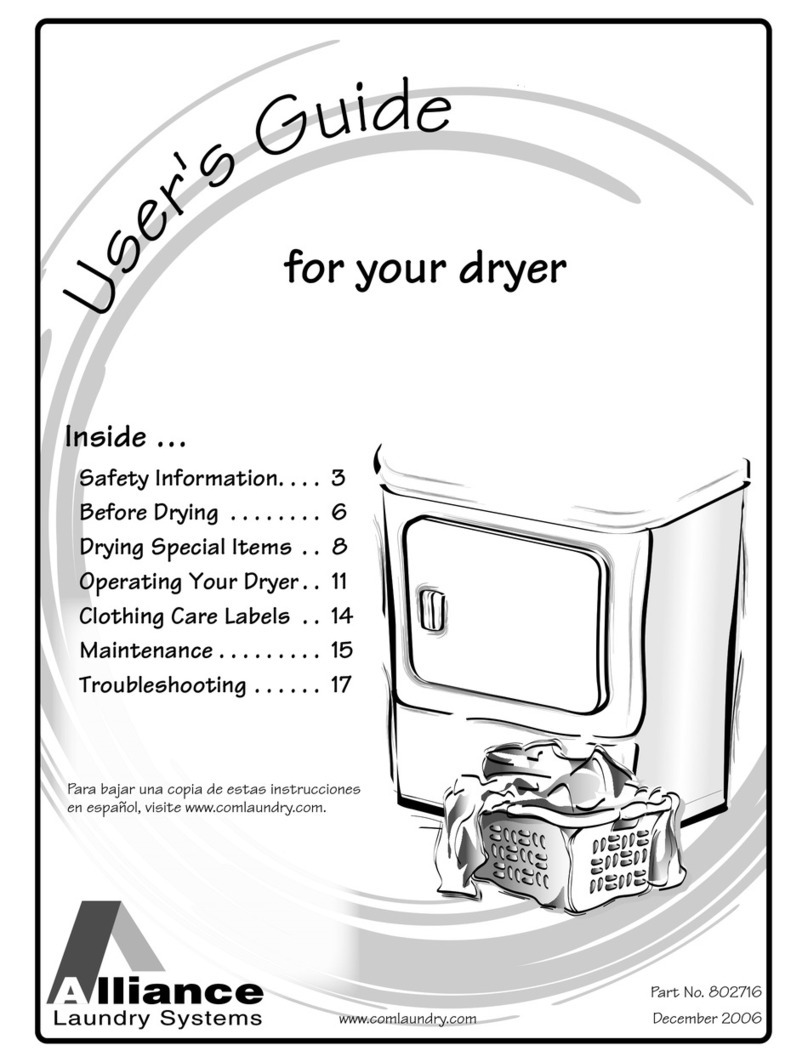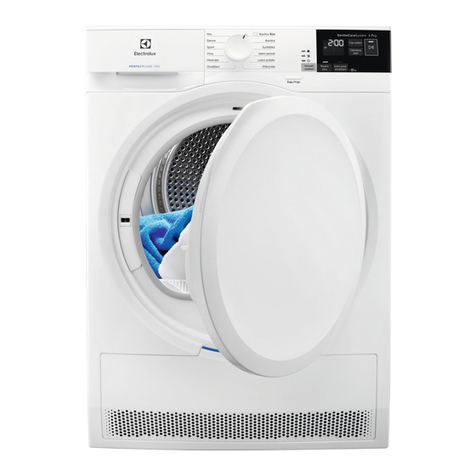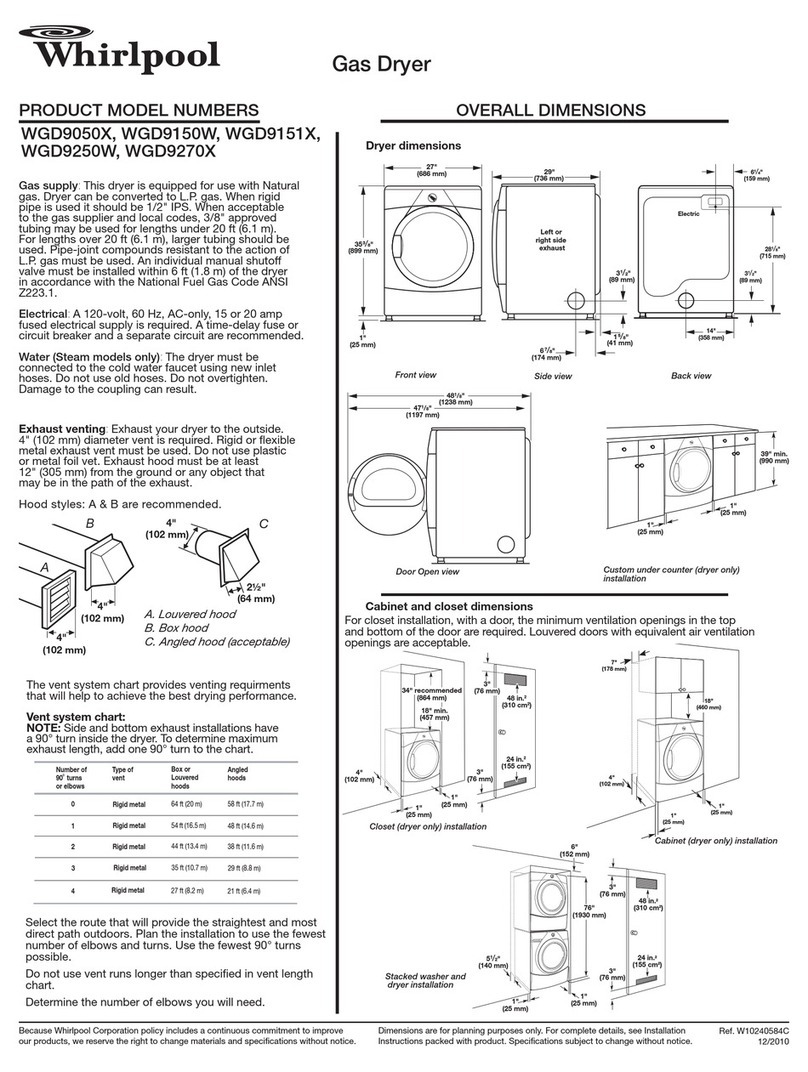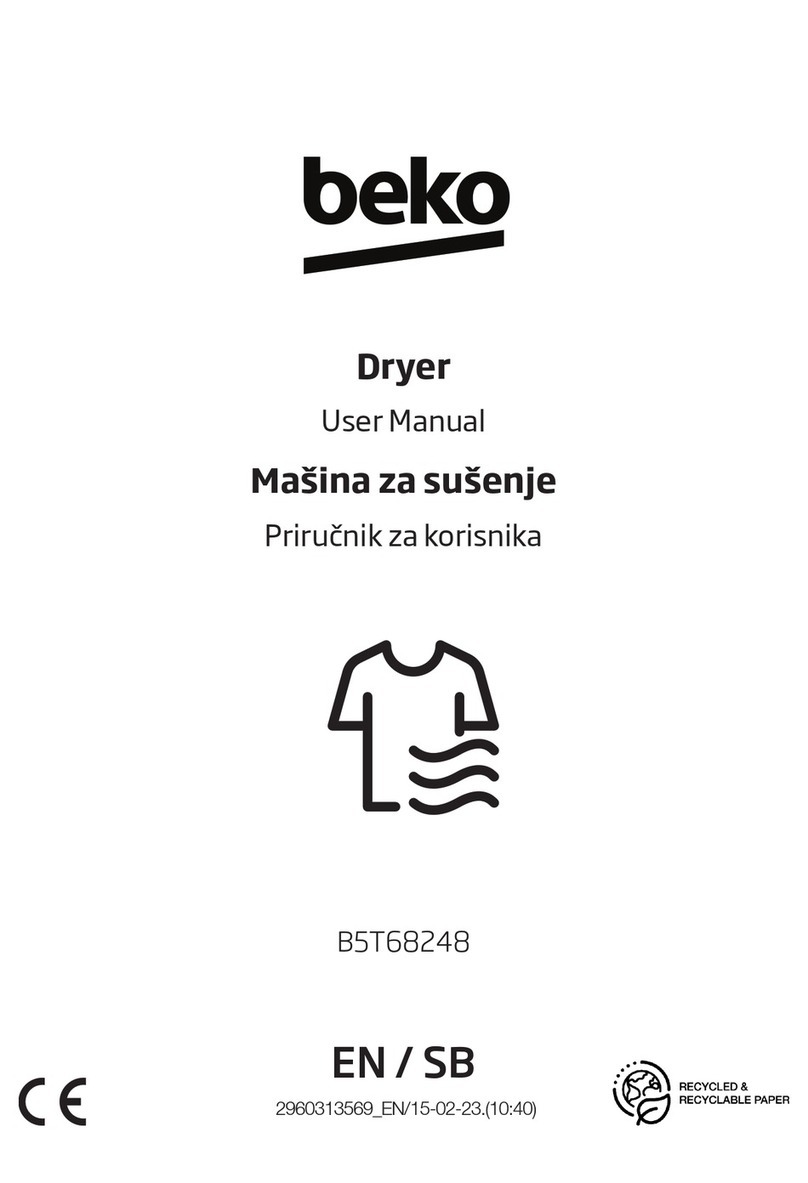
Freeze-dryer Alpha 1-4 LSCplus
Freeze-dryer Alpha 2-4 LSCplus
Version 01/2011, Rev. 2.3 of 03/07/2017 • sb
Translation of the original operating manual
7Malfunctions and error correction....................................................................................79
7.1 General malfunctions......................................................................................................79
7.1.1 Power failure..............................................................................................................80
7.1.2 Insufficient vacuum....................................................................................................81
7.1.2.1 Small flange connections...................................................................................81
7.1.2.2 Aeration valve, media drain valve ......................................................................82
7.1.2.3 Pressure control valve........................................................................................82
7.1.2.4 Rubber valves....................................................................................................82
7.1.2.5 Vacuum sensor..................................................................................................82
7.1.3 Insufficient ice condenser temperature ......................................................................83
7.2 Process and error messages..........................................................................................83
7.3 Service contact...............................................................................................................84
8Maintenance and service................................................................................................... 85
8.1 Maintenance...................................................................................................................85
8.1.1 General......................................................................................................................85
8.1.2 Ice condenser chamber .............................................................................................86
8.1.3 Aeration valve, media drain valve..............................................................................86
8.1.4 Heat exchanger (only for air-cooled freeze-dryers)....................................................87
8.1.5 Vacuum pump ...........................................................................................................87
8.1.6 Exhaust filter (oil mist separator)................................................................................88
8.1.7 Vacuum sensor..........................................................................................................88
8.1.8 Accessories...............................................................................................................88
8.2 Disinfection of the drying chamber and accessories .......................................................89
8.3 Service ...........................................................................................................................90
8.4 Return of defective parts.................................................................................................90
9Disposal.............................................................................................................................. 92
9.1 Disposal of the freeze-dryer............................................................................................92
9.2 Disposal of the packaging...............................................................................................92
10 Technical data.................................................................................................................... 93
10.1 Ambient conditions .........................................................................................................95
10.2 Technical documentation................................................................................................95
11 Appendix ............................................................................................................................ 96
11.1 Mathematical relations....................................................................................................96
11.2 Brief operating instructions .............................................................................................97
11.3 EC declaration of conformity in accordance with the EC Machinery Directive...............103
11.4 Declaration of conformity –China RoHS 2....................................................................105
11.5 Resistance to stress cracking and chemical influences "Plexiglas"...............................107
12 Glossary........................................................................................................................... 125
13 Index................................................................................................................................. 127




















